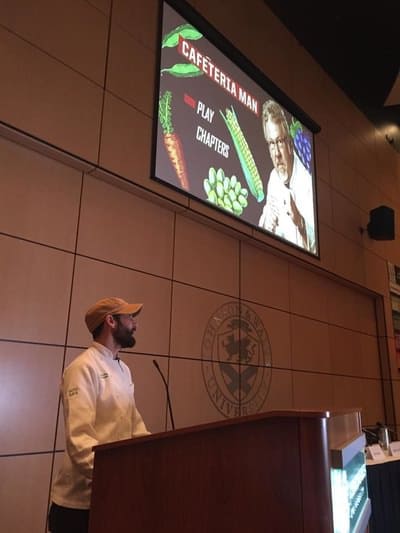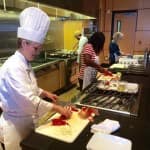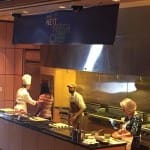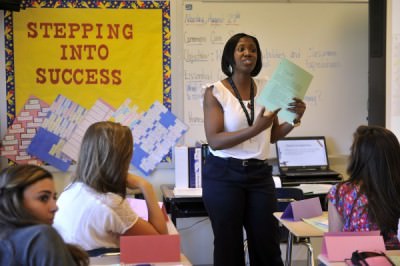
Clark Barlowe, who owns the farm-to-table restaurant Heirloom and is Charlotte magazine’s reigning chef of the year, is no stranger to innovation. Each day, he is challenged by his commitment to having a restaurant that serves foods grown in North Carolina.
So it was fitting that Barlowe and Johnson and Wales University instructor Megan Lambert recently were paired up with Charlotte-Mecklenburg Schools cafeteria workers for a cooking demonstration to think about ways to get fresh, healthy food into school lunchrooms.
The demo was part of a symposium hosted by the Charlotte-Mecklenburg Food Policy Council, a nonprofit that advocates for “policies that build a sustainable, equitable and healthy local food system.” Its program of work is supported by the county health department, Bank of America and Johnson and Wales, among other organizations. The group is making a year long push to boost the quality of the food served in CMS schools in light of the fact that one in three children in Mecklenburg County is overweight or obese.
That works out to more than 49,000 students who attend CMS. Certainly there is more at play for many of those children than just the quality of the food they eat at school. Healthy eating has to be a lifestyle, organizers said, but attacking the problem at school can help students establish better habits that can apply to the rest of their lives.
Before the cooking competition, the council hosted a panel discussion about the issue. Superintendent Ann Clark and school board chair Mary McCray both participated. More than 200 people packed an auditorium at JWU for the discussion.
Panelists highlighted some of the usual barriers to healthy eating at school.
Vending machines continue to be a problem, they said, even despite stricter rules about when students can access them. When there are nutritious options, students often pick pizza or french fries over vegetables. Lunches are incredibly short, leaving students little time to stand in line, order, and eat.
Perhaps one of the most interesting barriers is that many CMS cafeteria kitchens, especially in older schools, are set up for the school lunch of the past. Cafeteria managers say they don’t have the storage capacity or prep space to handle as much fresh produce as they’d like.
The cooking competition was meant to inspire the audience to think creatively about the types of food that can be served in lunch lines across the district. Barlowe’s team cooked purple sweet potatoes topped with a gremolata of lemon, parsley, and garlic. Lambert and her group created a sweet potato hash with red peppers and onions. Both dishes—bright with color and bursting with freshness—attempted to win students over by sight, smell, and presentation before they even took a bite.
In the end, the audience chose Lambert’s dish, but students will have a chance to experience both this school year. CMS is planning to replicate the chefs’ creations in lunchrooms across the district.
It could be just the inspiration students—and policymakers—need to fill cafeteria trays with more than just pizza and fries.





